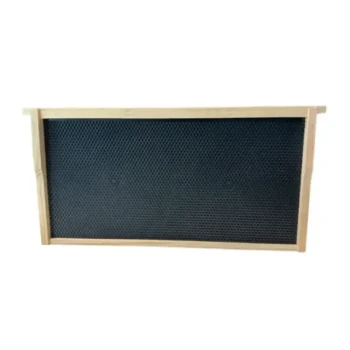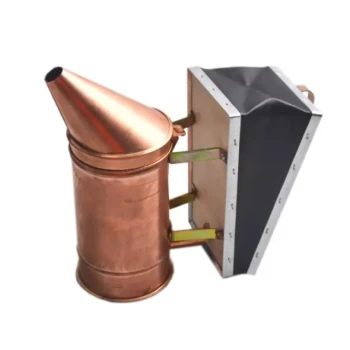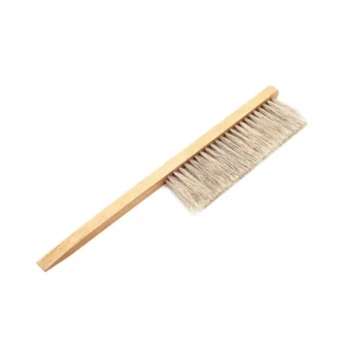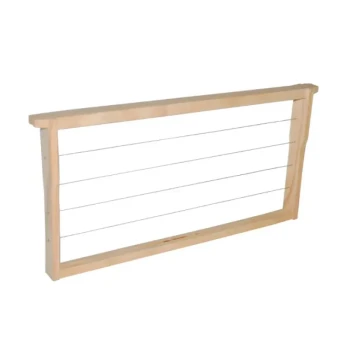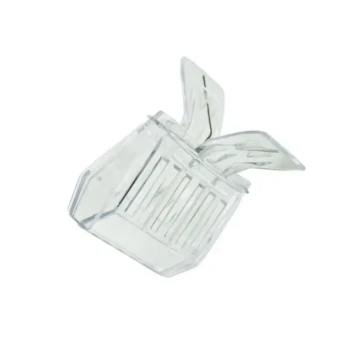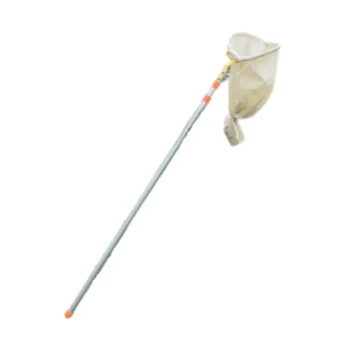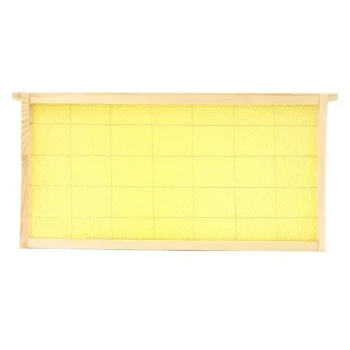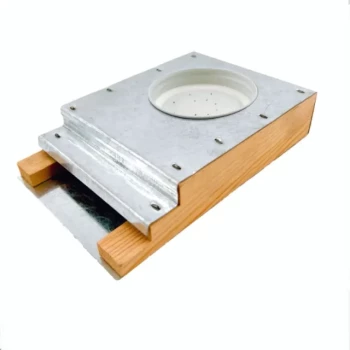Starting your beekeeping journey? The right veil is your first line of defense—and comfort. This guide breaks down the must-have safety features and ergonomic adjustments for beginners, helping you avoid common pitfalls while ensuring a pleasant experience.
Choosing a Beekeeping Veil: Safety First
Why Fencing Veils Are Recommended for New Beekeepers
Fencing veils (zipped to a jacket or suit) offer the highest protection for beginners. Their design minimizes gaps where bees could enter, a critical feature when you’re still mastering hive inspections. Research shows that new beekeepers face higher sting risks due to unfamiliar movements; a fully enclosed veil reduces this vulnerability.
Key Safety Features: Zipper Security and Mesh Durability
- Zipper Quality: Opt for rust-resistant, double-stitched zippers that won’t snag. A faulty zipper can leave a gap—an open invitation for bees.
- Mesh Integrity: Look for tightly woven polyester or nylon mesh (0.25–0.5 mm holes). Unlike cotton, polyester resists stretching over time, maintaining long-term sting protection.
Pro Tip: Test the veil’s mesh by stretching it gently. If it distorts easily, bees could penetrate it under tension.
Balancing Comfort with Protection
Adjustable Fit: Avoiding Gaps and Ensuring Mobility
A poorly fitted veil compromises safety and comfort. Prioritize:
- Elastic Straps: These keep the veil snug against your shoulders without restricting head movement.
- Reinforced Brims: A stiff brim prevents mesh from collapsing onto your face, reducing claustrophobia during long hive checks.
Ventilation and Visibility: Mesh Quality Considerations
Polyester mesh outperforms cotton in breathability, reducing fogging and heat buildup. For optimal visibility:
- Choose veils with oversized mesh panels (extending over shoulders) to widen your field of view.
- Avoid dark-colored mesh, which can absorb heat and obscure vision in sunlight.
Did You Know? Some advanced veils incorporate antimicrobial coatings to reduce odor—a perk for commercial beekeepers working long hours.
Transitioning to Advanced Veils: When and How
Once you’re comfortable with hive handling (typically after 1–2 seasons), consider upgrading to round or square veils with a helmet. These offer:
- Faster Donning: Built-in hats eliminate separate headgear.
- Modularity: Pair with ventilated jackets for hot climates.
However, beginners should master basics first. As one study notes, "Novice beekeepers benefit most from full-seal protection before experimenting with minimalist gear."
Ready to Gear Up Safely?
HONESTBEE equips commercial apiaries and distributors with durable, beginner-friendly veils designed for all-day comfort and sting-proof security. Explore our wholesale-focused range to find gear that grows with your beekeeping skills.
Final Thought: The best veil isn’t just about defense—it’s the quiet ally that lets you focus on the fascinating world of bees.
Products You Might Be Looking For:
View beginner-friendly beekeeping veils
Visual Guide
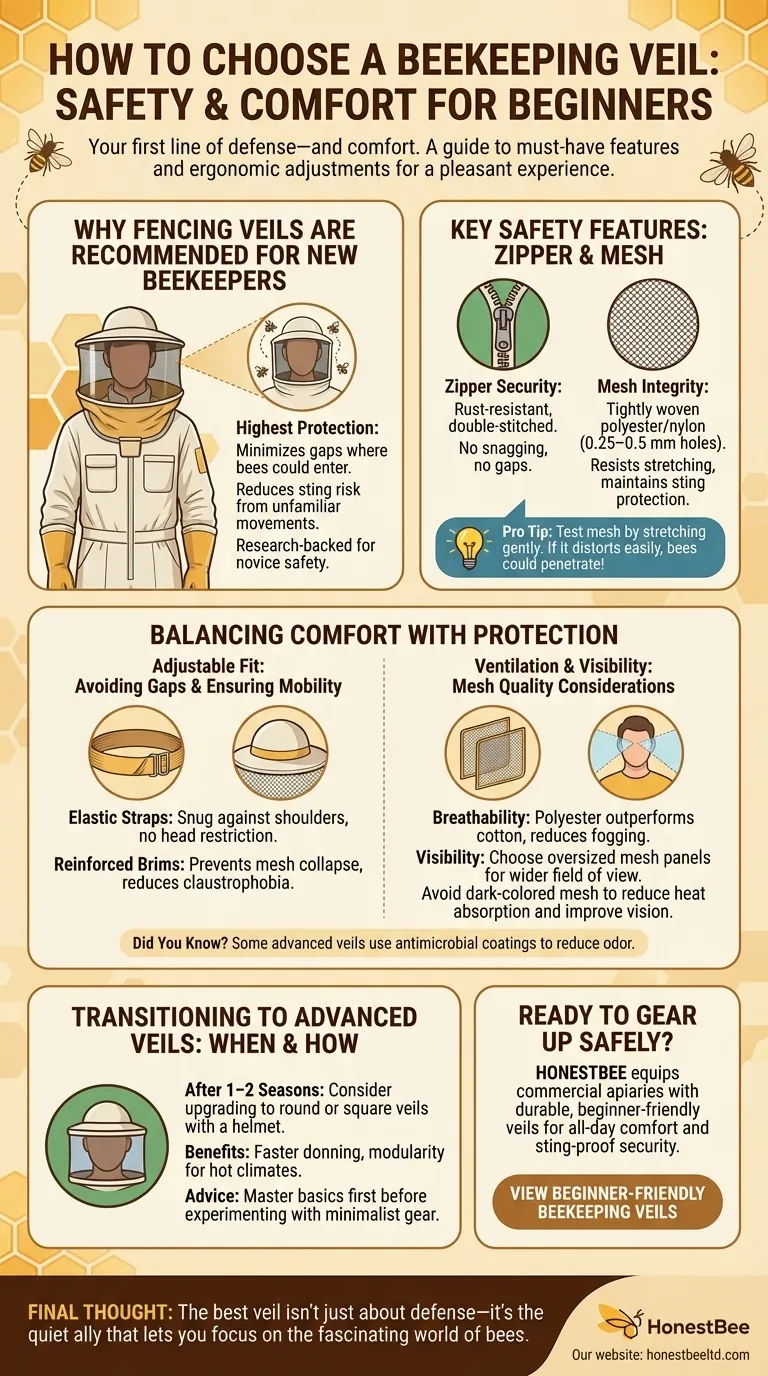
Related Products
- Heavy Duty Cowboy Beekeeper Hat with Visibility Veil Outdoor Professional Beekeeping Protective Gear
- Beekeeper Cowboy Hat and Veil for Beekeeping
- Square Folding Bee Hat Veil with String for Beekeeping
- Cotton Beekeeping Suit and Round Hat with Veil Bee Keeper Protective Gear
- Professional Beekeeping Suit for Kids and Girls Childrens Bee Keeper Suit
Related Articles
- Beyond the Apiary: The Beekeeping Veil as a Tool for Focus
- How to Stop Honey Robbing: Science-Backed Strategies for Safe Harvesting
- The Beekeeper's Blind Spot: The Cognitive Ergonomics of a Veil
- The Scent of Danger: Why Bee Suit Maintenance is About Pheromones, Not Just Dirt
- Essential Beekeeping Equipment for Beginners: Functions, Selection, and Best Practices









